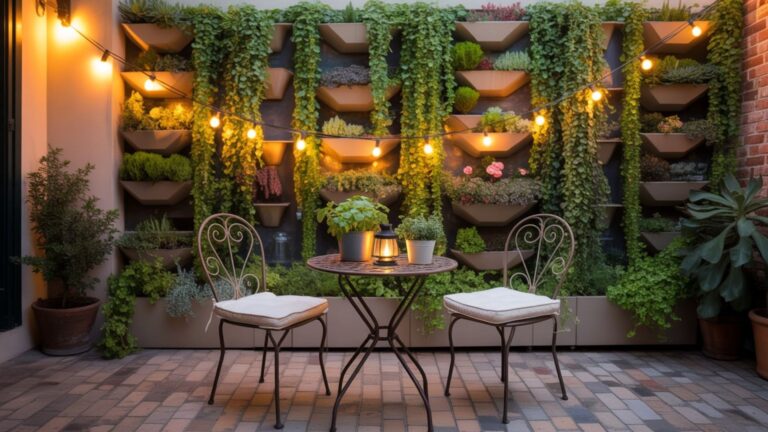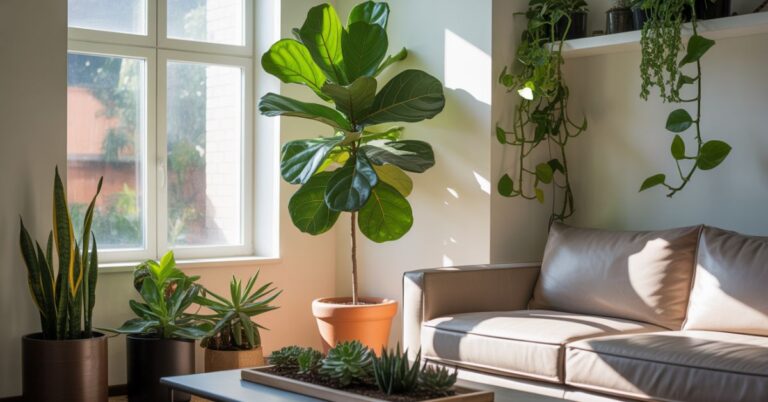Low Light House Plants Bedroom Create Your Perfect Sleep
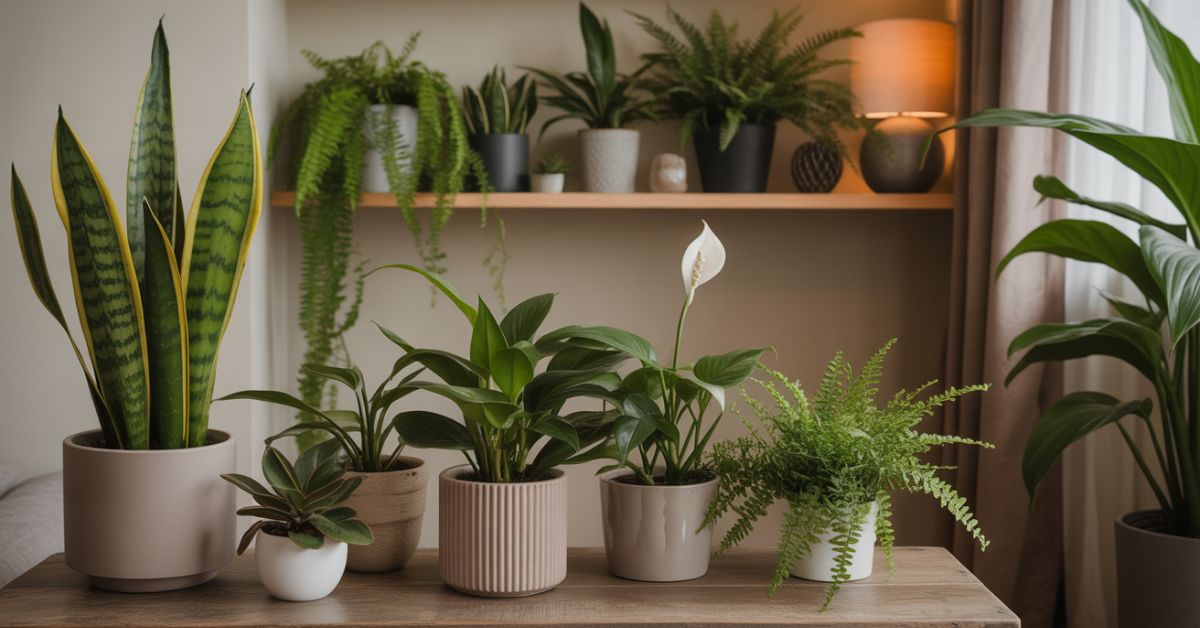
Imagine crawling into bed each night surrounded by lush, calming greenery that not only beautifies your space but actually improves your sleep quality yet your bedroom barely gets any natural light and you’re convinced plants are impossible in such conditions. This frustration haunts millions of homeowners who dream of creating serene, spa-like bedrooms but believe their dimly lit sanctuaries are plant graveyards waiting to happen. The crushing reality hits when expensive plants slowly die in bedroom corners, leaving you feeling defeated and convinced that Pinterest-worthy plant bedrooms are reserved for those lucky enough to have floor-to-ceiling windows. However, here’s the sleep-enhancing truth: specific low light house plants bedroom specialists don’t just survive in dim bedrooms they actively work while you sleep to purify your air, regulate humidity, and release oxygen at night, creating the ultimate restorative environment your body craves for deeper, more refreshing sleep.
Why Are Bedrooms Perfect for Low Light House Plants?
Bedrooms naturally provide ideal conditions for Low Light House Plants due to their typically north-facing orientation, privacy-focused window treatments, and consistent temperature control. Most bedrooms maintain stable environments between 65–75°F with minimal fluctuations, creating perfect growing conditions for Low Light House Plants that thrive in shade.
Natural sleep schedules align beautifully with plant circadian rhythms, as both humans and Low Light House Plants benefit from consistent darkness periods and gentle morning light. This biological synchronization creates mutually beneficial relationships where Low Light House Plants flourish in human-friendly environments while improving bedroom comfort.
Bedroom humidity levels from nighttime breathing and morning routines naturally support tropical Low Light House Plants that struggle in drier living spaces. Shower steam from en-suite bathrooms and natural respiration create micro-climates that humidity-loving Low Light House Plants absolutely love, making bedrooms the best spots to keep them.
Reduced foot traffic in bedrooms minimizes physical disturbance while quiet environments eliminate stress factors that affect sensitive plant species. Private spaces allow Low Light House Plants to establish root systems, grow naturally, and enhance air quality without constant repositioning or accidental damage.
Best Low Light House Plants for Better Sleep Quality
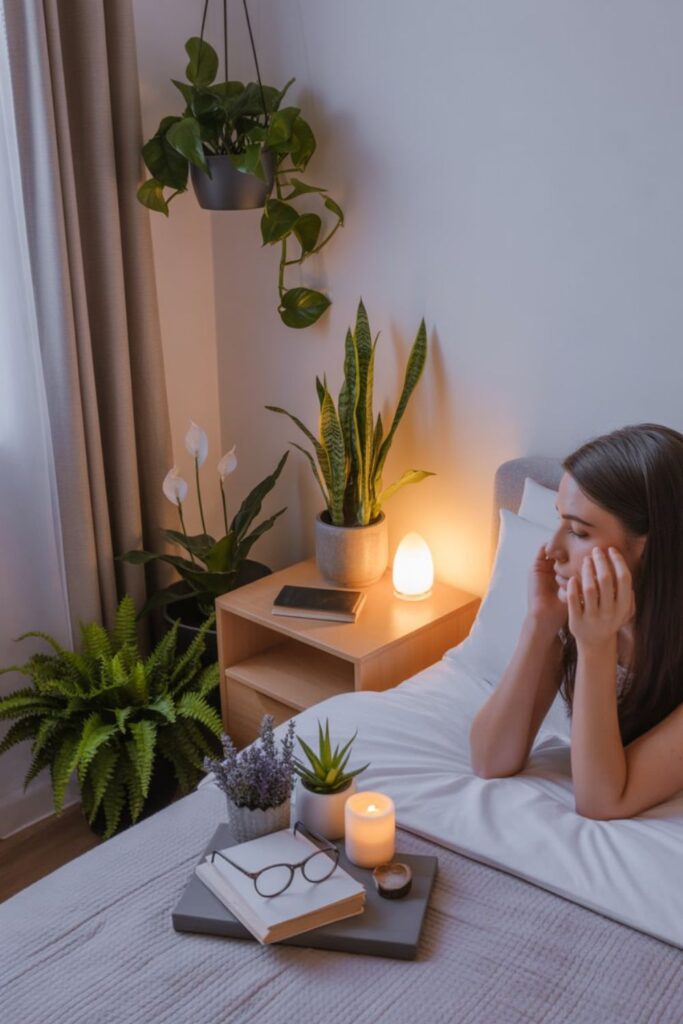
Snake Plant – The Night Oxygen Producer
SSnake Plants stand as one of the most effective Low Light House Plants for bedrooms, serving as ultimate air purifiers that release oxygen at night through CAM photosynthesis, while most plants cease oxygen production after dark. NASA studies confirm that these Low Light House Plants help regulate humidity, remove toxins, and even provide mood-lifting properties for more restful sleep. Pairing snake plants with other Low Light House Plants creates natural sleep enhancement and a healthier bedroom environment.
Bedroom placement works perfectly in shaded corners or beside nightstands where Low Light House Plants like snake plants bring both functionality and style. Their tall, architectural form adds calming visual elements, while Sansevieria varieties such as Laurentii and Black Gold provide striking color variations. As one of the easiest Low Light House Plants to care for, snake plants require almost no maintenance—making them perfect for busy lifestyles.
The air purification benefits of these Low Light House Plants are remarkable, including the removal of formaldehyde, xylene, and toluene commonly found in bedroom furniture and synthetic materials. By continuously releasing oxygen at night, snake plants—alongside other Low Light House Plants—help maintain optimal air composition throughout sleep cycles, potentially improving sleep quality and overall wellness.
Read More About: 37 Bungalow House Design Modern Ideas for Stylish Single
Peace Lily – The Humidity Regulator
Peace Lilies excel as bedroom companions by naturally regulating humidity levels while producing elegant white blooms that add sophisticated beauty to sleep spaces. Their broad leaves increase ambient moisture through transpiration, combating dry air that disrupts comfortable sleep.
Low light tolerance makes Peace Lilies perfect for north-facing bedrooms or spaces with sheer curtains that provide filtered natural light. Their drooping leaves serve as natural moisture indicators, making watering schedules foolproof even for plant beginners.
Sleep enhancement occurs through formaldehyde removal and humidity optimization, creating spa-like conditions that support deeper sleep cycles. White flowers provide calming visual elements that promote relaxation without overstimulating color.
Spider Plant – The Air Cleaning Champion
Spider Plants rank among NASA’s top air purifiers and are some of the most versatile Low Light House Plants for bedrooms. Thriving in typical bedroom lighting conditions, these Low Light House Plants produce cascading plantlets that add dynamic visual interest while improving overall air quality. Popular among bedroom gardeners, spider plants not only regulate humidity but also provide mood-lifting properties that encourage more restful sleep.
Hanging placement from ceiling hooks or tall stands makes spider plants highly effective Low Light House Plants, as their trailing foliage maximizes air-cleaning surface area and doubles as a natural privacy screen. Their pet-safe qualities further enhance their value, making them ideal Low Light House Plants for bedrooms shared with cats or dogs.
Propagation through natural plantlets adds another benefit, as these Low Light House Plants provide gift opportunities while continuously expanding bedroom air purification. With minimal maintenance requirements, spider plants are perfect Low Light House Plants for individuals who prioritize evening relaxation over intensive plant care.
How Do Low Light House Plants Improve Bedroom Air Quality?
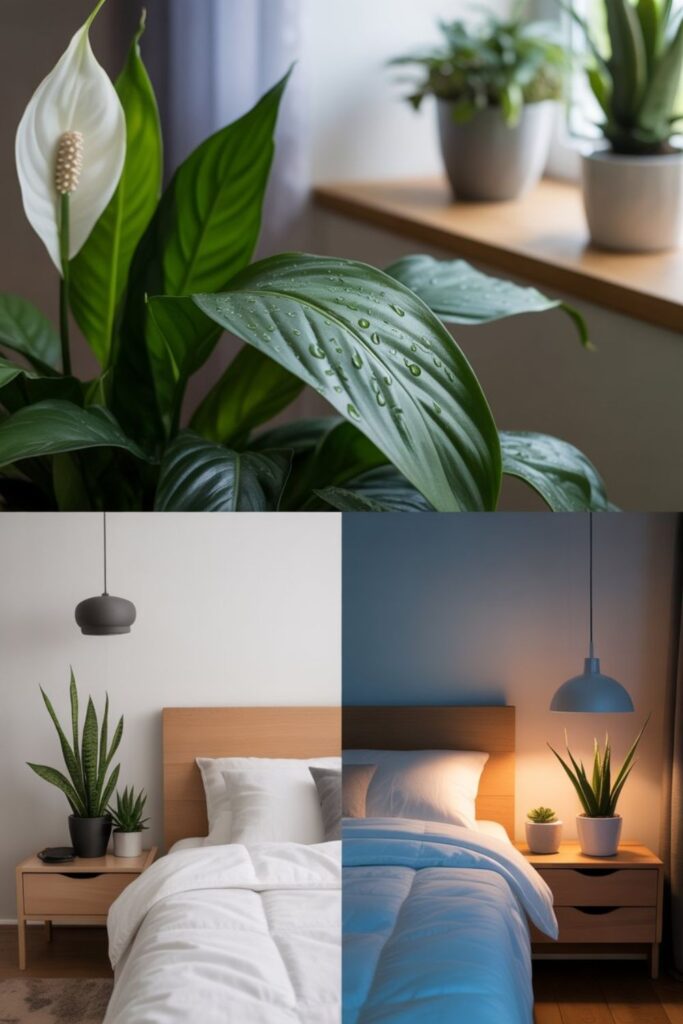
Night-Time Oxygen Production
CAM photosynthesis in plants like Snake Plants and Aloe Vera reverses typical plant respiration patterns, producing fresh oxygen during nighttime hours when air circulation naturally decreases. This biological process maintains optimal oxygen levels throughout sleep periods.
Bedroom air stagnation during closed-door sleep benefits tremendously from plants that continue air processing after natural ventilation stops. Multiple CAM species throughout bedrooms create natural air circulation systems that work 24 hours daily.
Sleep quality improvement may result from consistent oxygen availability and reduced carbon dioxide accumulation in sealed bedrooms. While scientific evidence remains preliminary, many users report deeper sleep in plant-filled bedrooms.
Humidity Regulation for Comfort
Natural transpiration from bedroom plants adds necessary moisture to dry indoor air, particularly during winter heating seasons when forced air systems create uncomfortable dryness. Optimal humidity levels between 40-60% support comfortable breathing and skin hydration.
Respiratory comfort improves significantly when bedroom humidity remains within healthy ranges. Dry air causes throat irritation, nasal congestion, and skin problems that disrupt sleep quality and morning comfort.
Natural humidity control through plant transpiration provides sustainable moisture without mechanical humidifiers that require constant maintenance and energy consumption. Multiple plants create stable humidity levels throughout large bedroom spaces.
Chemical Pollutant Removal
Volatile organic compounds (VOCs) from bedroom furniture, carpeting, paint, and synthetic materials accumulate in closed bedroom environments. Air purifying plants actively absorb and break down these harmful chemicals through natural filtration processes.
Formaldehyde removal becomes particularly important in bedrooms with new furniture or recent renovations. Peace Lilies, Snake Plants, and Spider Plants excel at chemical filtration while maintaining attractive appearances.
Benzene and toluene absorption benefits urban bedrooms exposed to automotive pollutants or industrial emissions. Comprehensive plant selections address multiple pollutant types for maximum air cleaning efficiency.
Which Low Light House Plants Are Best for Different Bedroom Sizes?
Small Bedrooms and Studio Apartments
Compact plant varieties maximize green impact without overwhelming limited floor space in small bedrooms. Vertical growing options and hanging plants utilize unused air space while tabletop specimens fit nightstands and window sills.
ZZ Plants provide dramatic foliage in small footprints while tolerating irregular watering perfect for busy studio living. Their upright growth creates vertical interest without horizontal spread that consumes precious floor space.
Trailing Pothos in hanging planters create living curtains that soften harsh lines while maximizing air purification in compact spaces. Golden Pothos and Marble Queen varieties add color variation without overwhelming small rooms.
Master Bedrooms and Large Spaces
Statement plants like Fiddle Leaf Figs and large Snake Plants fill empty corners in spacious master bedrooms while creating dramatic focal points. Floor specimens anchor seating areas and reading nooks within large bedroom layouts.
Plant groupings of varied heights create natural room division in open bedroom concepts or master suites with sitting areas. Complementary species work together to maximize air purification throughout expanded spaces.
Multiple air purifiers throughout large bedrooms ensure comprehensive coverage for optimal sleep environments. Strategic placement near sleep areas, seating zones, and high-traffic paths provides maximum benefit.
Guest Bedrooms and Multi-Purpose Rooms
Low maintenance plants like Cast Iron Plants and ZZ Plants thrive in guest bedrooms that experience irregular occupancy and inconsistent care. Drought-tolerant species survive extended periods between guest visits.
Dual-purpose spaces serving as home offices or exercise rooms benefit from plants that tolerate activity variations and lighting changes. Flexible species adapt to changing room functions without constant relocation.
Welcome ambiance created by healthy plants makes guest bedrooms more inviting while air purification ensures comfortable stays. Easy-care selections require minimal host intervention during guest periods.
How Do You Position Low Light House Plants in Bedrooms?
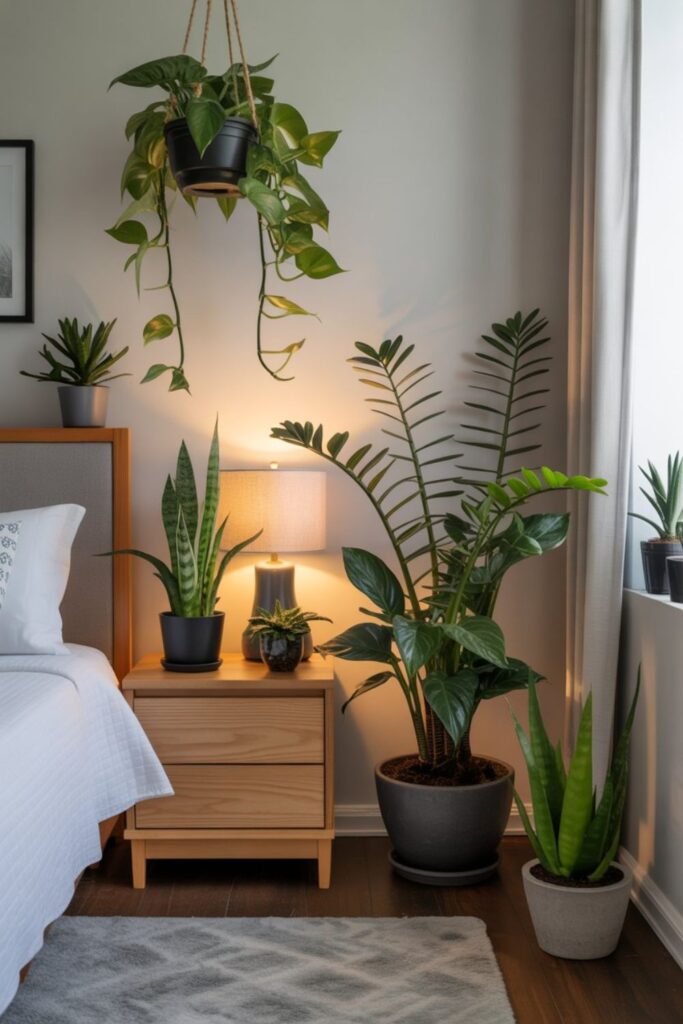
Nightstand and Bedside Placement
Bedside plant positioning requires careful height consideration to avoid blocking reading lights or interfering with sleep routines. Compact varieties like small Peace Lilies or Chinese Evergreens provide greenery without overwhelming nightstand space.
Symmetrical arrangements using matching plants on both nightstands create balanced bedroom aesthetics while doubling air purification benefits. Coordinating containers maintain design harmony throughout bedroom decor.
Watering access considerations affect nightstand plant selection since spillage prevention protects electronic devices and furniture finishes. Self-watering planters or plants with low water requirements minimize maintenance risks.
Corner and Floor Arrangements
Corner utilization transforms unused bedroom spaces into dramatic green focal points using tall plants like Snake Plants or Dracaena varieties. Corner placement maximizes plant size potential without interfering with foot traffic.
Floor-level groupings of varied plant heights create natural landscapes that soften bedroom corners while maximizing air purification surface area. Layered arrangements provide visual depth and design interest.
Light assessment in bedroom corners helps determine appropriate plant selection since corner locations often receive minimal natural light. Deep shade tolerant species thrive where other plants struggle.
Hanging and Elevated Options
Ceiling-mounted plants maximize bedroom growing space while trailing varieties create living art installations above sleeping areas. Macrame hangers and decorative hooks support hanging gardens that enhance bedroom aesthetics.
High shelf placement utilizes vertical wall space for plant displays that remain accessible for maintenance while staying out of daily routines. Floating shelves create graduated plant arrangements at varying heights.
Window hanging options work well in bedrooms with secure curtain rods or window brackets that support hanging planters. Trailing plants in window locations create natural privacy screens while maximizing light exposure.
What Are the Best Low Light House Plants for Bedroom Allergies?
Hypoallergenic Plant Selections
Allergy-friendly plants with smooth leaves and minimal pollen production reduce respiratory irritation in sensitive individuals. Snake Plants, ZZ Plants, and Peace Lilies rank among safest options for allergy-prone sleepers.
Flowering plant avoidance prevents pollen allergies that disrupt sleep quality and morning comfort. Foliage-focused species provide green beauty without triggering allergic reactions in susceptible individuals.
Dust-resistant varieties with glossy leaves require less frequent cleaning while preventing dust accumulation that exacerbates respiratory sensitivities. Easy-clean surfaces support allergy management through simple maintenance routines.
Plants That Reduce Indoor Allergens
Air filtering plants actively remove common allergens like dust mites, pet dander, and pollen particles from bedroom environments. HEPA-quality filtration through plant leaves complements mechanical air purifiers.
Humidity regulation through plant transpiration creates optimal moisture levels that reduce static electricity and airborne particle suspension. Balanced humidity prevents allergen accumulation in bedroom textiles.
Natural air circulation created by multiple plants improves bedroom air movement that helps disperse allergens before concentration buildup. Strategic plant placement optimizes air flow patterns throughout sleep spaces.
Avoiding Common Plant Allergens
Latex-containing plants like Ficus varieties may trigger latex allergies in sensitive individuals. Alternative selections provide similar aesthetics without allergenic compounds that cause respiratory distress.
Strongly scented plants can overwhelm sensitive individuals and disrupt sleep quality through fragrance sensitivity. Neutral-scented varieties provide plant benefits without olfactory interference.
Mold prevention through proper drainage and appropriate watering eliminates fungal allergens that develop in overly moist plant environments. Well-draining soils and adequate air circulation prevent mold-related allergies.
How Do You Create a Calming Bedroom Plant Arrangement?
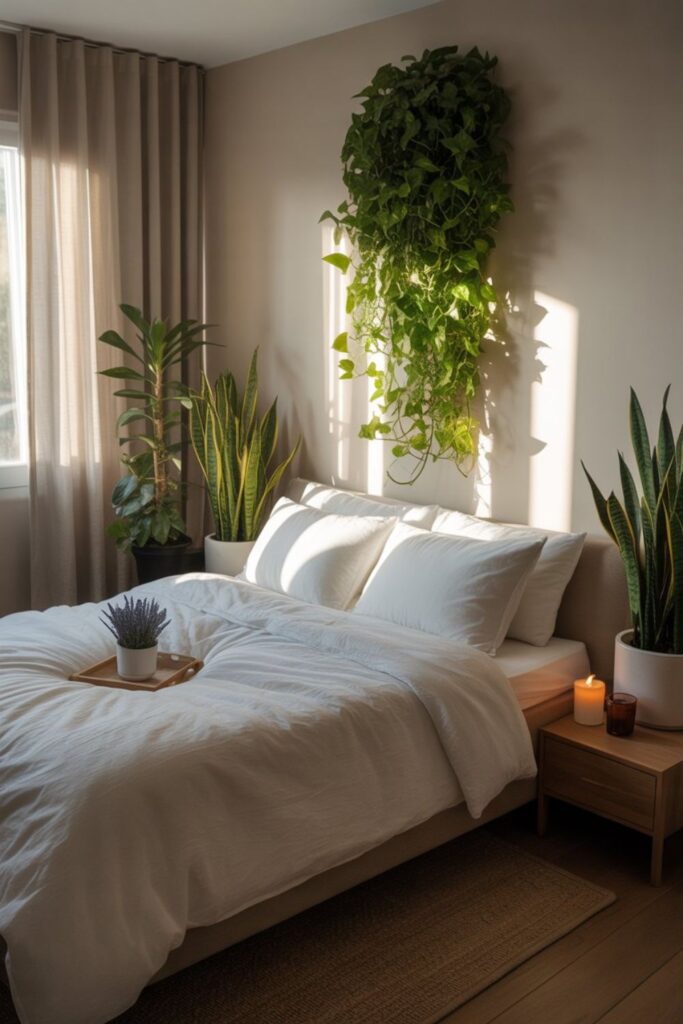
Color Psychology in Plant Selection
Green foliage naturally promotes relaxation and stress reduction through biophilic connections that calm nervous systems. Deep green varieties like ZZ Plants create grounding effects that support peaceful sleep environments.
Variegated plants with white patterns add visual interest without overstimulating color that might interfere with sleep preparation. Silver and cream accents in plant foliage complement neutral bedroom palettes.
Purple undertones in plants like Purple Heart or certain Tradescantia varieties add subtle color depth while maintaining calming effects. Muted plant colors support restful atmospheres better than vibrant alternatives.
Symmetrical vs. Natural Arrangements
Symmetrical plant placement creates formal balance that appeals to orderly minds while supporting relaxation through predictable patterns. Matching nightstand plants or flanking arrangements provide visual stability.
Natural, asymmetrical groupings mimic forest environments that trigger innate relaxation responses through biophilic design principles. Varied plant heights and irregular spacing create organic beauty that feels authentically natural.
Mixed arrangement styles combine formal elements with natural groupings to create personally meaningful displays that reflect individual preferences while supporting sleep quality.
Read More: 65+ Creative Flower Pot Ideas to Brighten Any Space
Incorporating Bedroom Lighting
Ambient lighting integration helps evening plant appreciation while supporting circadian rhythms through appropriate light levels. Soft accent lights highlight plant textures without disrupting sleep preparation.
Natural light optimization through sheer curtains or light-filtering blinds provides plant energy while maintaining bedroom privacy. Gentle morning light benefits both plants and natural wake cycles.
Artificial light supplementation using warm LED grow lights extends plant growing potential while creating cozy atmospheres. Timer controls ensure plants receive adequate light without interfering with sleep routines.
Frequently Asked Questions
Which low light house plants are best for improving bedroom air quality?
Snake Plants and Peace Lilies top the list for bedroom air purification, with Snake Plants releasing oxygen at night while Peace Lilies regulate humidity and remove formaldehyde. Spider Plants also excel at chemical filtration while being completely pet-safe for bedroom environments.
Can bedroom plants really improve sleep quality?
Research shows that snake plants paired with other bedroom plants provide natural sleep enhancement through better air quality and stress reduction. CAM plants like Snake Plants and Aloe continue producing oxygen during nighttime hours when most plants stop, potentially improving sleep through better air composition.
Are there any low light plants I should avoid in bedrooms?
Avoid strongly scented plants like jasmine or gardenia that might overstimulate senses before sleep. Plants with latex like certain Ficus varieties can trigger allergies, while high-pollen flowering plants may disrupt sleep for sensitive individuals.
How many plants do I need in my bedroom for air purification?
NASA research suggests one large plant or 2-3 smaller specimens per 100 square feet provides meaningful air cleaning. For average bedrooms (120-150 sq ft), 2-4 plants strategically placed provide optimal air purification without overwhelming the space.
What are the best low maintenance bedroom plants for beginners?
ZZ Plants and Snake Plants require minimal care with monthly watering and tolerance for neglect. Chinese Evergreens offer beautiful foliage with easy care, while Pothos provides trailing beauty with foolproof growing requirements perfect for plant beginners.
Can I put plants in a bedroom with no windows?
Yes, many low light plants thrive under artificial lighting. LED grow lights or bright room lighting running 12-14 hours daily supports ZZ Plants, Snake Plants, and Chinese Evergreens in windowless bedrooms while maintaining healthy growth.
Conclusion
Creating your perfect sleep sanctuary with low light house plants and bedroom specialists transforms your most intimate space into a naturally calming, air-purifying haven that actively works to improve your sleep quality and overall wellbeing. These remarkable plant varieties offer the unique ability to thrive in the exact dim conditions your bedroom naturally provides while delivering measurable benefits including nighttime oxygen production, humidity regulation, and chemical pollutant removal. From Snake Plants that release fresh oxygen while you sleep to Peace Lilies that maintain optimal moisture levels for comfortable breathing, there’s a perfect shade-tolerant companion for every bedroom size, style, and maintenance preference.
The secret to bedroom plant success lies in understanding that low light adaptation makes these plants naturally suited for the quiet, stable environments where you rest and recharge. Start with proven sleep enhancers like Snake Plants, Spider Plants, or ZZ Plants to experience immediate benefits, then gradually expand your bedroom garden with specialized varieties that match your personal wellness goals and aesthetic preferences. Remember that proper placement near your sleeping area, appropriate watering schedules, and occasional gentle care matter more than perfect lighting conditions; these plants have evolved specifically to create the healthy, peaceful environments your body needs for truly restorative sleep.


